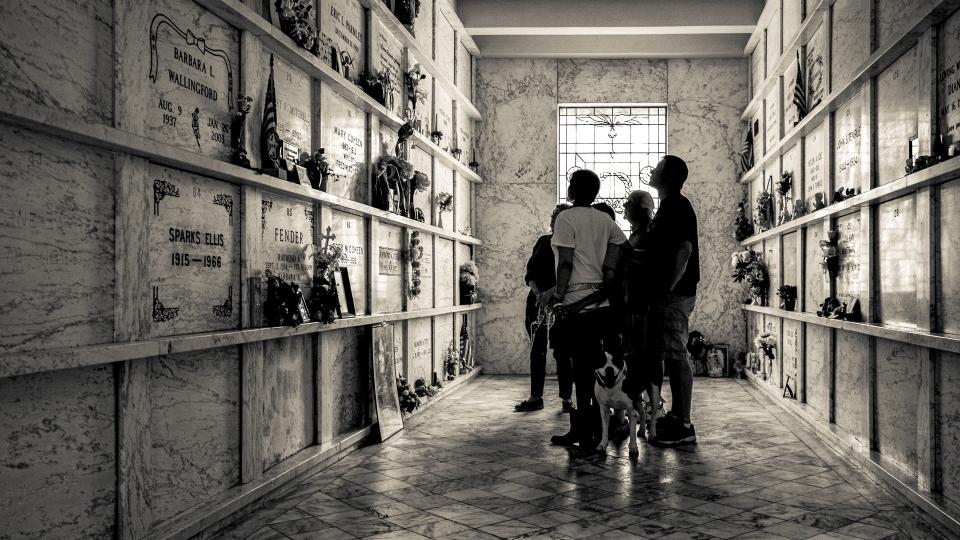Heroin's Comeback
Around 6 p.m. on February 8th, 2011, Elizabeth Solomonson's quiet Friday evening at home was disturbed by a knock on the door. A police officer was standing on her front porch. At 4:19 p.m., that afternoon, the department had been notified of a deceased white female, and he wanted to know if Solomonson was the mother of a young woman named Raven. She interrupted the officer before he could finish. Raven was out of town undergoing treatment at a drug facility, so this had to be a mistake. There was no way it could be her daughter. But the officer confirmed the worst: At age 20, Raven had died from a heroin overdose.
That night, an ice storm swept through the small town of Tecumseh, Michigan, knocking out phone lines and power. The officer stayed with Solomonson as she tried to get ahold of her husband. He was out of town on a fishing trip. They both thought they had a reprieve now that Raven was in rehab after a three-year battle with heroin.
Raven’s overdose in 2011, at age 20, was one of several in Tecumseh that year. Over the next four years, heroin-related incidents began siphoning more of the local police department’s resources.
“Once we realized we had a heroin problem, we had to play catch-up,” says Lenawee County Sheriff Jack Welsh, whose team monitors heroin-related cases. “Nobody is protected from this addiction. It’s hitting every age group, every economic group.” In 2014, six heroin-related deaths occurred in Tecumseh – the highest number ever recorded in the community of 8,500. As of June, the Lenawee County medical examiner had reported four more heroin-related deaths in the town in 2015.
East of Tecumseh, Monroe County has a similar story. In April 2015, three people died of heroin overdoses in 24 hours. With about 40 deaths attributed to drug overdose just last year –15 of them related to heroin – Monroe County health officials say the area is facing a heroin epidemic.
Michigan is only one part of a larger story. In the United States, fatal heroin overdoses nearly tripled between 2010 and 2013, from 3,036 to 8,257, according to the U.S. Centers for Disease Control and Prevention. Vermont has seen a more than 770 percent increase in people receiving treatment for opiate addiction since 2000. During one week in 2014, 22 people died in Pennsylvania after injecting heroin laced with fentanyl, a drug that can be 100 times stronger than morphine.
When Oscar-winning actor Philip Seymour Hoffman died of a toxic combination of heroin and other drugs in 2014, reports on the country’s growing heroin problem made headlines. President Barack Obama’s “drug czar” at the time, Gil Kerlikowske, warned the public of a nationwide resurgence of heroin and noted a gateway drug: prescription painkillers.
Between 1999 and 2010, U.S. sales of opioids such as Percocet, Vicodin, and OxyContin quadrupled. Makers downplayed the risk of dependency, and the drugs were relatively easy to obtain through a prescription – or from a friend or relative. In 2010, the National Institute on Drug Abuse reported that 8.76 million Americans were abusing prescription medicine, with 5.1 million misusing painkillers.
“Too often, opioid painkillers were prescribed to excess,” wrote Sam Quinones, author of “Dreamland: The True Tale of America’s Opiate Epidemic,” in the New York Times in April. “After I had my appendix removed a few years back, I received 60 Vicodin, when four might have been enough.”
In response to prescription painkiller abuse, the Drug Enforcement Administration (DEA) began shutting down “pill mills” – clinics where doctors prescribe narcotics inappropriately. Those arrested faced criminal charges, including conspiracy to distribute a controlled substance. Purdue Pharma, the manufacturer of OxyContin, redesigned its pills, encasing them in a stronger shell so they would be more difficult to misuse by crushing, chewing, or snorting. The DEA also tightened control on major national pharmacies by regulating the amount of OxyContin, Percocet, and Vicodin they were allowed to sell. The combined efforts led to a sharp decline in availability.
The cost of black-market painkillers soared, and some addicts turned to heroin, which was available at one-tenth of the price. Heroin, a derivative of opium, has a chemical effect similar to that of opioid painkillers. A CDC study found that three out of four new heroin users report previous abuse of narcotic painkillers.
“If these [overdose] deaths are the measure, we are arguably in the middle of our worst drug plague ever,” Quinones wrote. “Prescription pain pills have created a new home for heroin in rural and suburban middle America.”
Raven’s family first suspected something was wrong when her grandmother, Janet von Kaler, noticed that painkillers she had been prescribed were disappearing from her medicine cabinet in large amounts. Raven was about 16 then. The von Kalers believe that around the same time, Raven’s boyfriend introduced her to heroin at a graduation party. By the time she turned 17, the family says, she was using regularly.
“I talked to her about marijuana and drinking – everything but heroin, because I thought it was a big-city problem,” her grandmother recalls. “I said, anyone who offers you drugs, don’t do it. But when they are that age, and at a party, they do it.”
After Raven died, her grandfather, Roland von Kaler, a member of the Rotary Club of Tecumseh, Michigan, needed a way to cope with his grief. So he decided to take a closer look at the drug problem in the community. He researched death certificates in Lenawee County and found that, in an 18-month period, heroin and opioids caused more overdoses than cocaine or methamphetamines. He also learned that abuse of these drugs was the leading cause of hospital admissions for overdoses in Lenawee County. “I knew our town had a growing heroin problem, and my research and personal experience with Raven led me to believe that prescription painkillers were the gateway,” von Kaler says.
To keep kids from taking pills out of medicine cabinets, von Kaler, a retired engineer, came up with the idea of building a drug locker – a lockable plastic box large enough to hold three or four pill bottles, where families could safely store their medications. He brought the concept to his Rotary club.
After hearing von Kaler’s proposal, the Tecumseh club started the Raven Project, and began collecting donations to cover the $14,000 cost of making the custom mold needed to produce the plastic lockbox. They raised enough money for 50 boxes, which were distributed to local pharmacies and schools. But three years after the effort started, the free boxes were sitting unused. People didn’t grasp why they needed to lock up their prescription medications.
“After a few years of working on this project, I realized people didn’t understand how heroin addiction starts,” von Kaler says. So he began a campaign to inform community members that it often traces back to prescription medication. Working with the Tecumseh school district, city hall, and community organizations including his Rotary club, von Kaler helped form the Tecumseh Coalition for Youth. Its members meet monthly and work with medical professionals to distribute information on prescription drug abuse at school and community events.
Their pamphlets are available in doctors’ waiting rooms and accompany prescriptions filled at local pharmacies. The coalition also focuses on the Michigan Automated Prescription System (MAPS), a program created to track prescriptions. April Demers, a regional prevention coordinator for the group, is working with Michigan State Senator Dale Zorn and Representative Jason Sheppard to draft a bill that will require doctors and pharmacists to register to use MAPS when prescribing or filling medications. This will make it easier to track prescription medication misuse.
Despite their efforts, progress is slow and frustrating, von Kaler says, noting that he wishes people realized how vulnerable they are. He says he still gets angry when people don’t pay attention to the drug problem until it hits their own family and they find out the pain firsthand. “We need more public awareness,” he says.
Quinones believes the community must play a role in dealing with addiction. “One thing families of addicts say is that when someone has cancer, neighbors bring casseroles,” he notes. “When someone has an addict in the family, the family is ostracized.”
After losing her daughter, Elizabeth Solomonson started operating a booth at Tecumseh’s summer festival and other street fairs. She hangs up a banner that reads “Raising H.E.L.L. for R.A.V.E.N.,” the name of the nonprofit she started in Raven’s honor. For hours, Solomonson hands out brochures and speaks to passersby about drug addiction. In October, she’ll march with others in Washington, D.C., as part of “FED UP!,” a rally demanding a federal response to the country’s opioid epidemic. Retelling Raven’s story isn’t easy for Solomonson, but she does it to educate others that nobody is immune to addiction, she explains: “You have to put a face on this epidemic to get people to connect the dots. Everyone thinks heroin users are scumballs, and Raven was this great, beautiful kid. She was a musician, loved animals, and was so kind and warm. She hated being an addict.
“I remember after Raven died, the funeral director politely asked, ‘What do you want to tell people?’” Solomonson recalls. “I told him that I want to tell the truth. I am not ashamed of my daughter. I have never been ashamed of her, and I’m not going to start now.”


